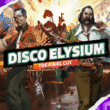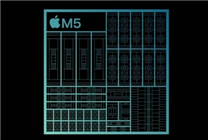The Unveiling of the Intel 8008: A Milestone in Semiconductor History
- Remarkable Achievement: CPU Duke shares the clearest die-shot of the Intel 8008 processor, a historic chip that marked the dawn of 8-bit microprocessors.
- Technical Mastery: A meticulous process involving 216 photomicrographs culminated in a stunningly detailed image, showcasing the chip’s intricate design.
- Legacy of Innovation: This processor, developed by the pioneering team behind the i4004 in 1971, remains a significant part of computing history.
The Intel 8008 processor has recently experienced a revival thanks to the dedicated efforts of a CPU collector known as CPU Duke. On October 22, the collector revealed one of the most detailed die-shot images of this significant chip, capturing the 8008’s essence in an unprecedented manner. The die-shot represents not just a visual representation but also a romantic homage to the formative years of microprocessor technology.
A Labor of Love
Creating this exquisite image was no small feat. CPU Duke meticulously aligned and stitched together 216 individual photomicrographs, transforming a mere chip into a landmark image that encapsulates the intricate engineering behind one of the world’s first 8-bit microprocessors. The Intel 8008 was designed in 1971, and it was initially released in April 1972—signaling a new era for computing.
The chip Duke examined was generously donated by the ENTER Technikwelt Computer Museum located in Solothurn, Switzerland. Prior to the imaging process, the chip required careful uncapping to allow for a comprehensive analysis. After removing the casing, Duke began with macro photography for an overall perspective before switching to a specialized Wild/Leica stereomicroscope for more granular observation.
Precision Imaging Techniques
Utilizing professional-grade equipment, CPU Duke conducted closer shots which showcased the chip’s detailed architecture. Notably, the i8008 sample he analyzed was produced using a 10-micron PMOS process, with its manufacturing traced back to an Intel assembly factory in Barbados active until 1986. The chip’s significant thickness allowed for effective optical microscopy, enabling Duke to discern features that would otherwise remain obscured.
"This thick PMOS structure makes optical microscopy feasible," Duke remarked, emphasizing how even at lower magnifications, one could clearly see the chip’s 18 pad connectors and markings such as “Intel 1971,” “8008,” and “HF,” the latter honoring Hal Freeny—one of the talented engineers involved in the i8008’s design.
Understanding the architecture
Though the final stitched image appeared in black and white, enthusiasts can reference a previously shared analysis image from chip analyst Ken Shirriff to correlate specific regions of the die to essential functional units, including the Arithmetic Logic Unit (ALU), registers, stack counters, and data buses. This comparison deepens appreciation for the complexity of early computing architectures.
A Legacy in Microprocessing
The Intel 8008 is often celebrated as a formidable step in computer history—it was Intel’s first 8-bit microprocessor and laid the groundwork for subsequent innovations in integrated circuit design. This legacy is particularly notable given that it was developed by the same team responsible for the i4004, Intel’s pioneering chip released just a year prior.
The 8008 delivered groundbreaking performance at the time and opened the door for more advanced microprocessors, substantially influencing the landscape of personal computing. By combining enthusiasts’ passion for historical technology and modern imaging techniques, the documented journey of the Intel 8008 serves as a poignant reminder of the milestones that have shaped the technology we rely on today.
Conclusion
In conclusion, the unveiling of CPU Duke’s detailed die-shot of the Intel 8008 not only highlights the impressive technical achievements of the past but also inspires a new generation of tech enthusiasts and professionals. By blending historical context with modern imaging techniques, we gain a deeper understanding of the intricate design and engineering that propelled the era of microprocessors into existence. Celebrating such milestones bridges the gap between the rich legacy of computing and the ongoing innovations that continue to transform our world.








